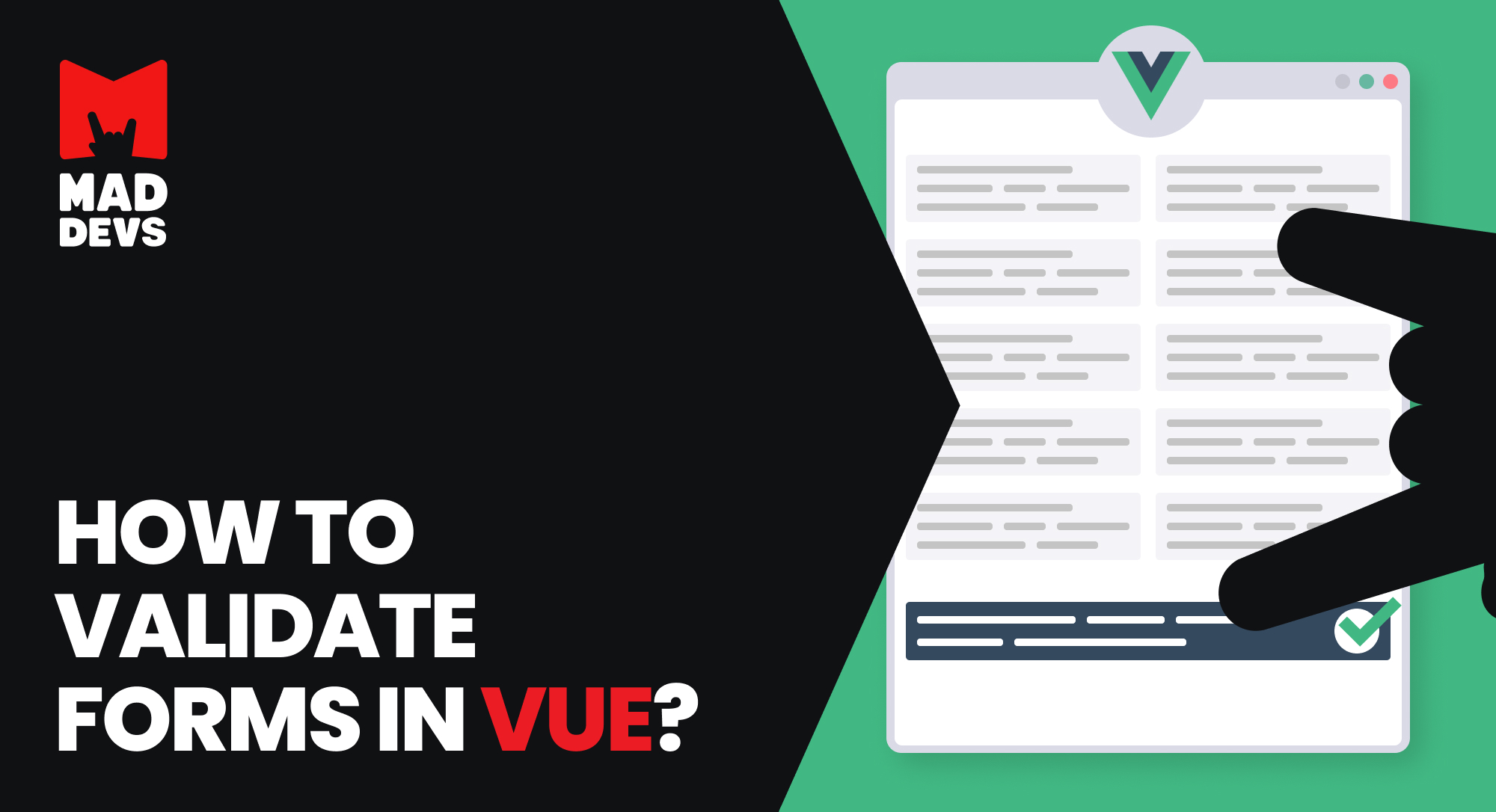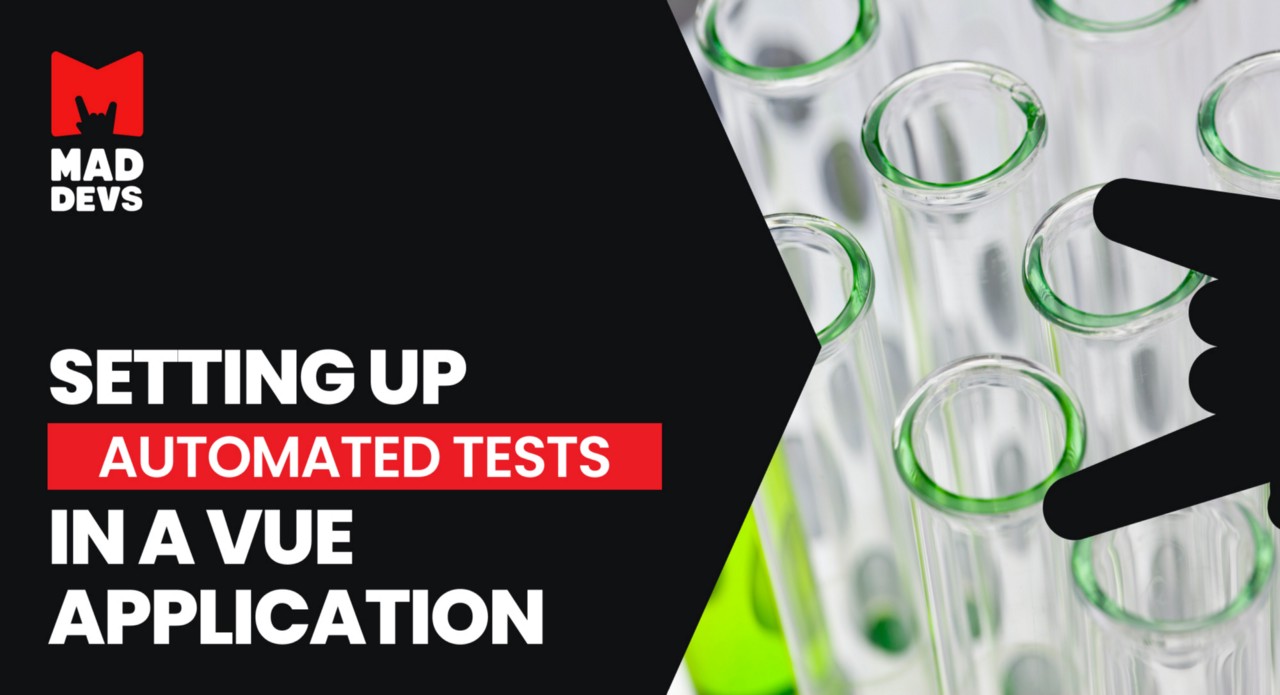валидация телефона vue js
Валидация форм
Простой пример
Валидация форм нативно поддерживается браузерами, но иногда разные браузеры могут обрабатывать вещи таким образом, что полагаться на них будет сложнее. Даже когда поддержка валидации реализована на отлично — могут потребоваться специальные проверки, и более подходящие решения основанные на Vue. Начнём с простого примера.
Есть форма с тремя полями, сделаем два из них обязательными. Давайте посмотрим на HTML для решения этой задачи:
Начнём с начала. Тег имеет ID, который мы будем использовать для компонента Vue. Есть обработчик события отправки формы (submit), который мы увидим далее, и также атрибут action с временным URL-адресом, который будет указывать на что-то реальное где-нибудь на сервере (где конечно же будет реализована и валидация на стороне сервера).
После этого расположен абзац, который показывается или скрывается в зависимости от наличия ошибок. Это позволит отобразить простой список ошибок над формой. Также обратите внимание, что мы запускаем проверку на submit формы, а не при изменении каждого поля.
Последнее, что нужно отметить — каждое из трёх полей имеет соответствующую v-model для связи с значениями, с которыми мы будем работать в JavaScript. Теперь давайте посмотрим на код.
Довольно коротко и просто. Мы определяем массив для хранения ошибок и задаём null в качестве значения для всех трёх полей формы. Логика checkForm (которая запускается при отправке формы) проверяет только имя и возраст, оставляя поле выбора фильма опциональным. Если они пусты, то мы проверяем по очереди и устанавливаем конкретную ошибку для каждого поля. И это в принципе всё. Вы можете запустить демо по ссылке ниже. Не забывайте, что при успешной отправке формы будет отправляться POST-запрос на временный URL.
Посмотрите Pen валидация форм 1 от Raymond Camden (@cfjedimaster) на CodePen.
Использование пользовательских проверок
Во втором примере, второе текстовое поле (возраст) было заменено на email, который будет проверяться с помощью специальной логики. Код взят из вопроса на StackOverflow, Как валидировать электронный адрес в JavaScript?. Классный вопрос — на его фоне любые политические/религиозные холивары выглядят как незначительные разночтения насчёт сортов пива. Серьёзно — это безумие. Вот HTML, хотя он действительно близок к первому примеру.
Посмотреть Pen валидации форм 2 от Raymond Camden (@cfjedimaster) на CodePen.
Другой пример пользовательской валидации
Для третьего примера, мы создадим то, что вы вероятно видели в приложениях для опросов. Пользователю предлагается потратить «бюджет» на набор возможностей новой модели Star Destroyer. Сумма должна быть равна 100. Во-первых, HTML.
Мы указали итоговую сумму как вычисляемое свойство, и это было достаточно просто реализовать для обхода этой ошибки. Мой метод checkForm теперь просто должен проверять является ли значение total равным 100 им всё. Вы можете поиграть с этим примером здесь:
Посмотрите Pen валидации форм 3 от Raymond Camden (@cfjedimaster) на CodePen.
Валидация на стороне сервера
В последнем примере мы построили что-то, что использует Ajax для валидации на сервере. Форма предложит назвать новый продукт и затем проверит, чтобы имя было уникальным. Мы быстро накидали Netlify serverless действие для этой валидации. Хотя это не очень важно, вот эта логика:
В принципе, любое имя кроме «vista», «empire», и «mbp» приемлемы. Хорошо, давайте посмотрим на форму.
Здесь нет ничего особенного. Давайте посмотрим на JavaScript.
Посмотрите Pen валидация форм 4 от Raymond Camden (@cfjedimaster) на CodePen.
Альтернативы
В то время как cookbook сосредотачивается на том, чтобы сделать валидацию формы своими руками, существует конечно и много отличных библиотек Vue, которые сделают большую часть работы за вас. Переход к использованию подготовленной библиотеки может повлиять на итоговый размер вашего приложения, но преимущества могут быть огромны. У вас есть код, который (скорее всего) основательно протестирован и регулярно обновляется. Некоторые примеры библиотек для валидации смотрите тут:
Валидация телефона vue js




A beautiful text field to format phone numbers made with VueJS
NEW VERSION ON MY NEW LIBRARY: MAZ-UI
The new version of VuePhoneNumberInput is now on my new library Maz-UI
Some options may change, check the props documentation with the top right button
In this new library, you can enjoy lot of others components in the same style. You can just install the component you want (and not the whole library), for this Read the Get started page
yarn add vue-phone-number-input
ES6 Modules / CommonJS
All options of VueInputUi are available
| Props | Type | Required | Default |
|---|---|---|---|
| v-model | String/Int | true | — |
| id | String | false | VuePhoneNumberInput |
| color | String HEX | no | dogderblue |
| valid-color | String HEX | no | yellowgreen |
| error-color | String HEX | no | orangered |
| size | String `sm | lg` | no |
| default-country-code (1) | String | no | null |
| preferred-countries (2) | Array | no | null |
| ignored-countries | Array | no | null |
| only-countries | Array | no | null |
| no-validator-state | Boolean | no | false |
| no-flags | Boolean | no | false |
| disabled | Boolean | no | false |
| dark | Boolean | no | false |
| dark-color | String (hex) | no | #424242 |
| required | Boolean | no | false |
| error | Boolean | no | false |
| clearable | Boolean | no | false |
| loader (3) | Boolean | no | false |
| translations (4) | Object | no | null |
| countries-height (5) | Number | no | 30 |
| no-use-browser-locale (6) | Boolean | no | false |
| fetch-country (7) | Boolean | no | false |
| no-country-selector (8) | Boolean | no | false |
| border-radius | Number | no | 4 |
| show-code-on-list | Boolean | no | false |
| no-example | Boolean | no | false |
(1) Ex : default-country-code=»FR»
(2) Ex : preferred-countries=»[‘FR’, ‘BE’, ‘DE’]» This countries will be at the top of the list
(3) Loader progress bar has the input color ( color props)
(5) height in px of the rows included in the dropdown. Ex: countries-height: 40
(8) The country selector is not shown, you can validate your phone number with the country code set
Vuelidate(0.7.6)
Simple, lightweight model-based validation for Vue.js 2.0
Getting started
Package content
Simple, lightweight model-based validation for Vue.js
You can read the introduction post for more insight on how this solution differs from other validation libraries.
Installation
Package is installable via npm
Basic usage
You can import the library and use as a Vue plugin to enable the functionality globally on all components containing validation configuration.
Alternatively it is possible to import a mixin directly to components in which it will be used.
The browser-ready bundle is also provided in the package.
Check out the JSFiddle example which uses this setup.
Examples
Basic form
For each value you want to validate, you have to create a key inside validations options. You can specify when input becomes dirty by using appropriate event on your input box.
Without v-model
Form submission
Contextified validators
You can link related fields by contextified validators. An example of this being sameAs builtin validator.
Data nesting
Validation Groups
If you want to create a validator that groups many otherwise unrelated fields together, you can create a validation group.
Collections validation
Asynchronous validation
Async support is provided out of the box. Just use a validator that returns a promise. Promise’s success value is used for validation directly, failed promise just fails the validation and throws the error.
Validator is evaluated on every data change, as it is essentially a computed value. If you need to throttle an async call, do it on your data change event, not on the validator itself. You may end up with broken Vue observables otherwise.
The async / await syntax is fully supported. It works especially great in combination with Fetch API.
Delayed validation errors
Accessing validator parameters
You can access information about your validations through `$params` of a parent validator. This is be useful for reporting errors to users.
Dynamic validation schema
Dynamic parameters
Because the whole validation process is based on computed properties, nothing prevents you from making the validator name dynamic. Such cases allows for very dynamic behaviour even when your data is changing in time.
There are two distinct structures present in vuelidate:
$v values
$v model represents the current state of validation. It does so by defining a set of properties which hold the output of user defined validation functions, following the validations option structure. The presence of those special reserved keywords means that you cannot specify your own validators with that name.
$v methods
A set of methods to control the validation model. Accessible on every level of nesting. All methods are meant to be used on any event handler you wish. There is no extra syntax to decide when the dirty flag should be set. Just use standard @input or @blur bindings.
Config keywords
Validators
This documentation presents every builtin validator with short description and presents an example custom validator implementation to help understanding them and writing your own as easy as possible.
Builtin validators
To use any of builtin validators, you have to import it from vuelidate library.
You can also import specific validators directly, to avoid loading unused ones in case your bundler doesn’t support tree shaking. This is not required for Rollup or Webpack 2 among others.
It is possible to use validators directly in browser by using a browser-ready bundle. Keep in mind this will always load all builtin validators at once.
Here is a full list of provided validators.
* Locator can be either a sibling property name or a function. When provided as a function, it receives the model under validation as argument and this is bound to the component instance so you can access all its properties and methods, even in the scope of a nested validation.
Example of conditional validations using a locator meta parameter:
Validator parameters
Every validator can save parameters. Validators are responsible for saving their type and parameters, because they are simple functions, and we may want to inform the user about them.
Custom Validators
You can easily write custom validators and combine them with builtin ones, as those are just a simple predicate functions.
Simplest example
Suppose you want a validator that checks if strings contains cool substring in it. The way to approach this is to use normal javascript function that checks that.
The second part is actually applying your validator. You can do it exactly the same way as with builtin ones.
Optional validator
Pattern presented above is often good enough, but this validator will always return false for empty input. This is not correct when your input is considered optional. For this reason, there exist a req helper, which is kinda stripped-down version of required validator. You can use it to make your validator behave well in presence of optional fields, that is the ones without required validator.
Extra parameters
If your validator needs to provide parameters, you can simply create a higher order function that returns the actual validator, like in between builtin validator.
$props support
The same behaviour extends to higher order validators, ones with extra parameters. You just must be careful to wrap the inner function with withParams call, as follows.
accessing component
regex based validator
locator based validator
If you want to use locator strategy, exactly the same one as in sameAs or requiredIf builtin validators, you can use ref helper to accomplish that, in exactly the same way how it is used inside those two validators.
Note that imports are slightly different, as this is how the code looks like from library source point of view. This style is the correct one if you are willing to contribute your own validators to vuelidate. You should still use helpers export inside your own code (as presented in previous examples).
List of helpers
This table contains all helpers that can be used to help you with writing your own validators. You can import them from validators library
Валидация форм во Vue.js
Валидация форм — одна из самых важных задач на сайте. Нам приходится валидировать данные на присутствие, на совпадение по паттерну, создавать асинхронные валидации, применять валидации только после снятия фокуса с поля или перед отправкой формы… Порой это становится настоящей головной болью для разработчика.
Vue.js содержит много интересных и необычных подходов к валидации, которые помогут решить ваши проблемы. Обзор под катом!
Частые ошибки
Валидации с помощью средств HTML5
HTML5 дал разработчикам возможность валидации форм с помощью новых атрибутов для полей и Validation API. Мы можем использовать их прямо в наших vue-шаблонах.
Вот, например, простая форма регистрации, состоящая из трех полей: поля для электронной почты, для пароля и повтора пароля. Для первых двух мы используем валидации с помощью атрибутов, для третьего — с помощью атрибутов и Validation API:
Даже в таком простом примере можно увидеть много проблем:
Валидации без использования библиотек
Другая частая проблема, которую я встречаю в проектах — валидации без использования библиотек.
В таком подходе нет проблем. За исключением того, что в формах с количеством полей больше одного рождается много повторяющегося кода, и каждый разработчик пишет валидации по-своему.
Лучший выход из всех проблем — пользоваться библиотеками, которые предлагает нам сообщество. На текущий момент есть два популярных решения для валидации форм:
vee-validate
vee-validate — библиотека для валидаций, появившаяся во времена Vue.js первой версии, имеет большое сообщество и используется в большом количестве проектов.
Возраст сказывается на весе — 31 КБайт (minified+GZIP), в полтора раза больше самого Vue.js! Связано это с тем, что библиотека содержит в себе сразу кучу вещей:
У vee-validate есть два подхода к валидациям: с помощью директивы и с помощью компонентов.
Валидация с помощью директивы v-validate
Подход с помощью директивы очень прост: вы вешаете на поле ввода директиву v-validate, которой передаете список валидаторов. Состояние валидации и строчки ошибок затем можно получить из полей fields и errors внутри компонента.
Чтобы посмотреть ее использование на примере, давайте сделаем простую форму, которая:
— Содержит поле «Серия и номер паспорта»
— Содержит поле «Дата выдачи паспорта»
— Содержит поле «Имя»
— Добавляет атрибут disabled на кнопку отправки формы если данные неверны
Как можно было заметить, при использовании флагов внутри fields.passport_date пришлось проверить поле passport_date на присутствие — во время первого рендера у vee-validate нет информации о ваших полях и, соответственно, нет объекта с флагами. Чтобы избавиться от этой проверки, используйте специальный хелпер mapFields.
Валидации с помощью компонентов
Новый способ валидации, который появился в конце прошлого года — использование компонентов. Сами авторы рекомендуют использовать этот подход, и он отлично сочетается с новым синтаксисом слотов из Vue.js@2.6.
Библиотека предоставляет два компонента:
Остальные возможности библиотеки
Проблемы
Первая и самая большая проблема — это, конечно же, ее размер. Библиотека не поддерживает tree-shaking и выборочное добавление валидаторов. Хотите вы или нет, в вашем бандле всегда будет присутствовать 2 компонента и директива валидаций, перевод на английский язык и 35 валидаторов.
Вторая проблема — из-за подхода, основанного на подписке на события, могут возникать проблемы при интеграции с другими библиотеками, которые тоже изменяют поведение полей ввода (маскеры и т.п.).
Третья проблема — более субъективная — переводы ошибок общие и некрасивые, не отражают реальной сути.
Возьмем форму из прошлых примеров. Если вы введете неправильный номер и дату паспорта, то получите такие ошибки:
Хочется заменить их на что-то более удобочитаемое:
Vuelidate
Библиотека Vuelidate появилась в ответ на проблемы с подходами, которые содержит в себе библиотека vee-validate. Vuelidate не имеет ни обработчиков событий для полей, ни переводов для ошибок валидации.
Благодаря простому подходу к валидациям, Vuelidate весит всего 3.4 КБайта (minified+GZIP), почти в 10 раз меньше vee-validate.
Устанавливается она так же просто:
Перепишем форму из прошлого примера с использованием Vuelidate:
Как можно заметить, поля с несколькими ошибками занимают очень много места и выглядят монструозно — решается это созданием отдельного компонента для отображения валидаций.
Остальные возможности библиотеки
Проблемы
Из проблем можно выделить разве что сравнительно скудное количество валидаторов из коробки, зачастую приходится писать свои функции для валидации.
Заключение
Библиотеку Vuelidate я использовал во многих проектах и ни разу не сталкивался с нерешаемыми проблемами. Для меня она остается лучшим выбором. Если вы заботитесь о размере своего кода и предпочитаете модельный подход к описанию валидаций — берите ее, простая документация и богатое апи позволит валидировать формы любой сложности.
Если вы делаете админку для внутреннего использования, не хотите тратить ни капли времени на строчки ошибок — выбирайте vee-validate. Она поможет быстро и без проблем написать много валидаций.
How to quickly validate forms in Vue?
Here is 20 min set up guide
Denis Grushkin / Frontend Developer
Today I want to show you how you can quickly and easily set up form validation in Vue. I hope this article will save you time and provide you with actionable insights. This article summarizes the most important points you’ll face while setting up form validation.
In this article you will learn:
What is form validation
Validation is the confirmation of the specified requirements.
To put it simply, it is an instruction that the user must follow when filling out the form. It will protect your application from unexpected or even malicious data. That is, you will be sure that the user will send a valid email instead of typed characters, or valid phone number instead of a name, etc.
Types of form validation
Let’s start with the types of validation. There are only two:
In the real world, developers tend to use a combination of client-side and server-side validation.
Client-side validation
Continuing with the topic of client-side validation, there are three types: instant, by loss of focus, and by form submission.
Of course, it’s preferable to use Instant Validation, since it will tell the user right away that something went wrong. The earlier the interface reports the error, the better — it’s easier for the user to go back and fix it.
Automated tests in a Vue project: how to test entire pages and individual components, mock server requests, and run it all in Docker.
How to validate forms via Vee-Validate?
By far, the best form validator for Vue, in my opinion, is Vee-Validate.
It positions itself as a framework with many features:
Let me tell you right away, we’re going to work with Vue version 2. Of course, I’d like to show you Vue 3 as an example, but I don’t think many people have had time to migrate to this version yet.
So, let’s slowly switch over to writing code. And let’s do this:
Step 1: Clone the example project.
Step 2: Look at the code to partially understand what we are going to talk about.
Step 3: And then I’ll tell you everything I wrote there.
I will show you using Nuxt.js as an example. If you are not familiar with it yet, I suggest you read my previous article.
As we remember, all plugins in Nuxt.js should be stored in the /plugins folder, in the root of the project. Go to this folder and open the file vee-validate.js.
This file will contain all the rules and settings. Vee-validate offers more than 25 ready-made rules. This list includes validation of passwords, mail, numeric values, images, etc. You can also add your own custom rules, which we will try to do now.
Custom form validator
Actually, it’s not hard to add your own rule. Let’s write a validator for the phone, which will output the error “The Phone field must contain only numbers and dashes.” if you enter any other characters except numbers and dashes.
Let’s deal with the code above.
To add a custom validator, you need to use the extend function. Its first parameter will be the name of your rule, in our case, it’s a phone, and the second parameter will be an object that has two methods:
And that’s it. This is enough to make our custom rule work.
Insert this code anywhere in the vee-validate.js file and now the new rule is available globally and can be used in any component.
Testing our new validator
It’s time to check what we’ve got. Open the index.vue file in the pages folder, create a new field with these parameters and don’t forget to add the variable phone to the data.
Our custom validator has been added to the rules attribute, which stores the list of rules for the field. You can use the | symbol to add as many rules as you want.
Run the project with the command:
After launching, the field for the phone should appear in the list of fields.
If you try to enter letters into it, an error message appears. If you enter numbers, the message will disappear.
Our custom rule works!
So you can write any validators you want, but don’t forget about the built-in validators, there are more than 25 pieces.
ValidationObserver and ValidationProvider components
The wrapper for the ValidationProvider component is ValidationObserver. It will help to track the state of all fields and return the corresponding status in case of any errors. For example, the parameter invalid will return false if all fields are valid, or true if one of the fields is invalid.
I will not list and describe all parameters and attributes of the ValidationObserver component, you can read in more detail in this link. The same I can say about the ValidationProvider. Read here.
Localization of error messages
You probably have a question: How do I translate the error message into another language?
The first thing to do is import the desired locales into the vee-validate.js settings file
Then initialize them in the localize method
Now let’s go to the index.vue file and add a couple of changes there.
We need a new function that will change error messages into different languages. To do this, we import the same localize method
Adds a new switchLocale method to the methods hook
And the last thing you should do is add a language switch button. You could put it under the header, for example:
That’s enough. And if you open the page, enter the incorrect data in the Email field and click the change language button, the error message will change to another language.
Now let’s try to translate the message for the custom phone validator.
Go back into the vee-validate.js settings file and change the code in the localize method like this:
Don’t forget to remove the message key in the custom validator. It should be like this:
That’s it, we can go check. Enter invalid data in the phone field, our new message will appear, which you can translate by clicking on the Switch Locale button.
Conclusion
I think we can end here. The main points I’ve shown and this will be enough to set up a basic level of validation in your application or website.
For more specific information, refer to the official documentation.
Major technologies you’d want to see in your tech.
Major technologies you’d want to see.
Major technologies you’d want to see in your tech stack: Pros and cons
The world of software development is increasingly dynamic: new technologies, tools, and frameworks emerge on a daily basis. Yes, only a small.
Web App Deploy to Glitch.com 🥳
Web App Deploy to Glitch.com 🥳
Web App Deploy to Glitch.com 🥳
So, this is the second part of my interaction with Glitch.com and in this part, we will talk about deployment methods, both standard and non-standard.
How to become a software developer: 7 things that I.
How to become a software developer: 7.
How to become a software developer: 7 things that I learned in the IT company
It is impossible for a trainee software developer to become a trustworthy professional in just one year. However, your first year in programming may.













